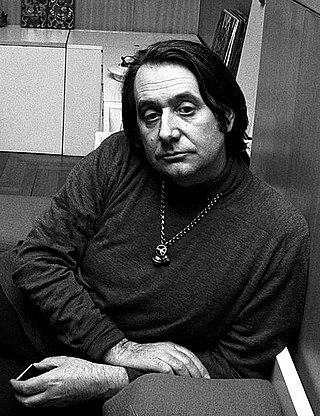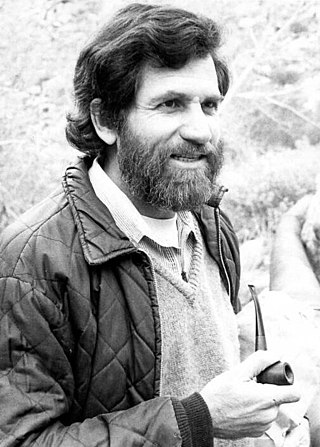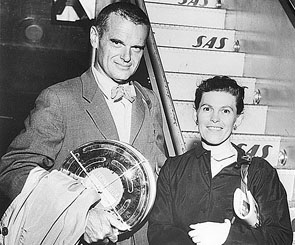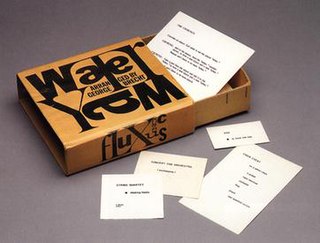Michael Max Asher was a conceptual artist, described by The New York Times as "among the patron saints of the Conceptual Art phylum known as Institutional Critique, an often esoteric dissection of the assumptions that govern how we perceive art." Rather than designing new art objects, Asher typically altered the existing environment, by repositioning or removing artworks, walls, facades, etc.

Ettore Sottsass was a 20th century Italian architect, noted for also designing furniture, jewellery, glass, lighting, home and office wares, as well as numerous buildings and interiors — often defined by bold colours.

Frank Lloyd Wright Jr., commonly known as Lloyd Wright, was an American architect, active primarily in Los Angeles and Southern California. He was a landscape architect for various Los Angeles projects (1922–24), provided the shells for the Hollywood Bowl (1926–28), and produced the Swedenborg Memorial Chapel at Rancho Palos Verdes, California (1946–71). His name is frequently confused with that of his more famous father, Frank Lloyd Wright.

Allan Kaprow was an American painter, assemblagist and a pioneer in establishing the concepts of performance art. He helped to develop the "Environment" and "Happening" in the late 1950s and 1960s, as well as their theory. His Happenings — some 200 of them — evolved over the years. Eventually Kaprow shifted his practice into what he called "Activities", intimately scaled pieces for one or several players, devoted to the study of normal human activity in a way congruent to ordinary life. Fluxus, performance art, and installation art were, in turn, influenced by his work.

Florence Marguerite Knoll Bassett was an American architect, interior designer, furniture designer, and entrepreneur who has been credited with revolutionizing office design and bringing modernist design to office interiors. Knoll and her husband, Hans Knoll, built Knoll Associates into a leader in the fields of furniture and interior design. She worked to professionalize the field of interior design, fighting against gendered stereotypes of the decorator. She is known for her open office designs, populated with modernist furniture and organized rationally for the needs of office workers. Her modernist aesthetic was known for clean lines and clear geometries that were humanized with textures, organic shapes, and colour.

Jean Prouvé was a French metal worker, self-taught architect and designer. Le Corbusier designated Prouvé a constructeur, blending architecture and engineering. Prouvé's main achievement was transferring manufacturing technology from industry to architecture, without losing aesthetic qualities. His design skills were not limited to one discipline. During his career Jean Prouvé was involved in architectural design, industrial design, structural design and furniture design.
Vladimir Kagan was an American furniture designer. He was inducted in the Interior Designer Hall of Fame in 2009, 62 years after he started designing and producing furniture.

Paul T. Frankl, an Art Deco furniture designer and maker, architect, painter and writer from Vienna, Austria, was the son of a wealthy real estate speculator.

Charles Eames and Ray Eames were an American married couple of industrial designers who made significant historical contributions to the development of modern architecture and furniture through the work of the Eames Office. They also worked in the fields of industrial and graphic design, fine art, and film. Charles was the public face of the Eames Office, but Ray and Charles worked together as creative partners and employed a diverse creative staff. Among their most recognized designs is the Eames Lounge Chair and the Eames Dining Chair.
Charles Hollis Jones is an American artist and furniture designer. He is known for his use of acrylic and lucite.

Water Yam is an artist's book by the American artist George Brecht. Originally published in Germany, June 1963 in a box designed by George Maciunas and typeset by Tomas Schmit, it has been re-published in various countries several times since. It is now considered one of the most influential artworks released by Fluxus, the internationalist avant-garde art movement active predominantly in the 1960s and '70s. The box, sometimes referred to as a Fluxbox or Fluxkit, contains a large number of small printed cards, containing instructions known as event-scores, or fluxscores. Typically open-ended, these scores, whether performed in public, private or left to the imagination, leave a lot of space for chance and indeterminancy, forcing a large degree of interpretation upon the performers and audience.
In some cases [event-scores] would arise out of the creation of the object, while in others the object was discovered and Brecht subsequently wrote a score for it, thus highlighting the relationship between language and perception. Or, in the words of the artist, "ensuring that the details of everyday life, the random constellations of objects that surround us, stop going unnoticed." The event-score was as much a critique of conventional artistic representation as it was a gesture of firm resistance against individual alienation.

Phyllis Morris was an American furniture designer known for her colorful persona, her outspokenness on decorating and her distinctive furniture and interior designs, especially her large and highly decorative beds. She was often referred to by the media as the "designer to the stars." By the time of her death, Morris had left a mark in the world of interior design in each of the four decades since the founding of her company Phyllis Morris Originals in 1953.

Kvadrat is a Danish textile company that produces and supplies textiles and textile-related products to architects, designers and private consumers in Europe and worldwide. Kvadrat was established in Denmark in 1968 with deep roots in Scandinavia's design tradition.

Jerome Ackerman (1920–2019) and Evelyn Ackerman (1924–2012) were American industrial designers who jointly contributed to the aesthetic of California mid-century modern with their ceramics, wood carvings, mosaics, textiles, and enamels in home furnishings and architectural elements. The Ackermans sold their products through their companies Jenev and ERA Industries. Evelyn was an accomplished artist and an author of books on antique toys and dolls.
Los Angeles Modern Auctions (LAMA) is the first auction house to specialize in 20th century Modern art and design. Founded by Peter Loughrey in 1992, LAMA especially champions Modern and Contemporary works by California and West Coast artists and designers.

John Brevard is an American designer, architect, developer, and investor. Brevard applies his background in architecture and multidisciplinary arts to create designs that are both visually appealing and conceptually meaningful. Inspired by the principles of sacred geometry, John Brevard's creations feature fractal patterns found in nature and organic and man-made materials, and are symbolic of the inseparable relationship of the part to the whole. His designs are expressed in different physical scales across many creative mediums, from jewelry to furniture, from sculpture to architecture.
Garth Clark is an art critic, art historian, curator, gallerist, and art dealer from Pretoria, South Africa.
Ralph Pucci is an American mannequin designer, gallery owner and entrepreneur.

Ricardo Barroso Barroso is a Mexican architect, interior designer and plastic artist, recognized as "one of the greatest exponents of interior design in Mexico" by Forbes magazine, which also included him in its list of the "50 most creative Mexicans in the world".

George Mann Niedecken was an American prairie style furniture designer and interior architect from Milwaukee, Wisconsin. He is best known for his collaboration with the architect Frank Lloyd Wright. He also designed interiors for Marion Mahony Griffin who was one of the first female architects.














